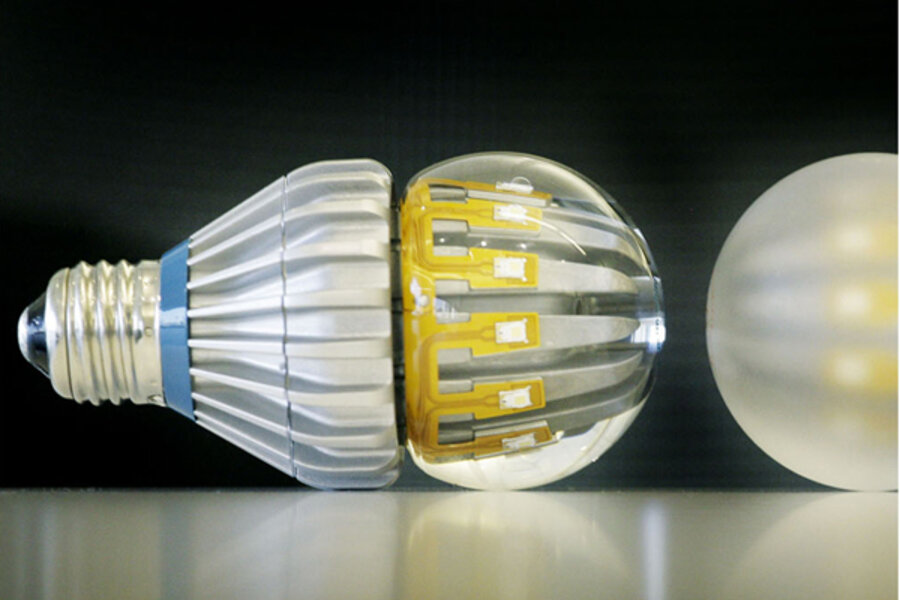Halogen light bulbs? CFL? LED? What's the difference?
Starting this year, the United States may no longer manufacture or import 60-watt incandescent light bulbs. The Energy Independence and Security Act, signed in 2007 by President George W. Bush, has slowly outlawed energy-hungry lighting. Stores may still sell what's in stock, but that inventory will soon be gone forever.
So what will light the future? For most homes, it'll come down to three options:
Halogen: These bulbs closely resemble traditional incandescents. Technically, they are incandescent. But the filament is surrounded by halogen gas, which glows just as brightly while using less electricity.
Halogen bulbs turn on instantly, emanate a warm light, and work with dimmer switches. They're also inexpensive – often just a few dollars each. The savings fade over the long term, however. Halogen bulbs burn out much more quickly than competing nonincandescent lights and consume close to three times as much electricity.
Price: $2 each
Consumes: 43 watts
Lifetime: 1,000 hours
Compact fluorescent lamp: CFLs balance cost and efficiency, but with a few drawbacks. The curlicue bulbs turn on slowly – more like a steady realization than a flash of inspiration. General Electric recently introduced hybrid bulbs that use halogen technology for instant illumination as the CFL coil warms up.
CFL and hybrid bulbs contain mercury, which requires careful disposal, and do not work with dimmer switches.
Price: $3 each
Consumes: 13 watts
Lifetime: 10,000 hours
Light-emitting diode: LEDs may be the light on the horizon. Over the past few years, manufacturers have greatly reduced the cost and improved the hue of these very efficient bulbs. Different models can match the warm tones of incandescents or the cool look of CFLs.
While the price of LEDs can seem burdensome at first glance, manufacturers insist the instant-on lights pay for themselves thanks to their long lifetimes. As production ramps up and costs continue to fall, LED lights could sweep the market, going from roughly 3 percent of light bulb sales today to 66 percent by the end of the decade, according to the research firm IHS in Englewood, Colo.
Price: $12-$30 each
Consumes: 10 watts
Lifetime: 25,000 hours






